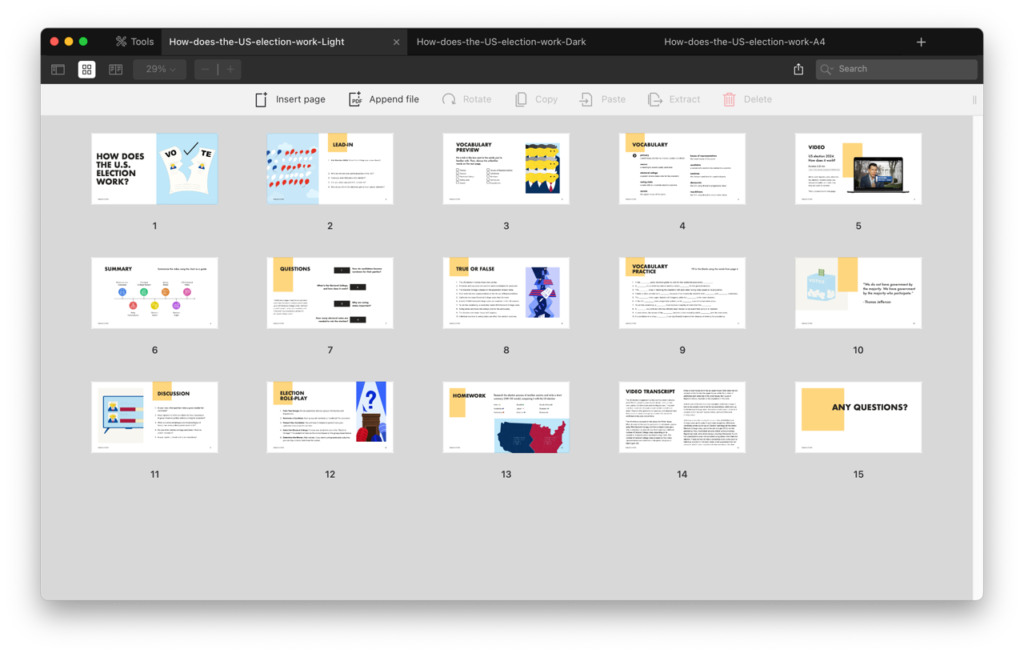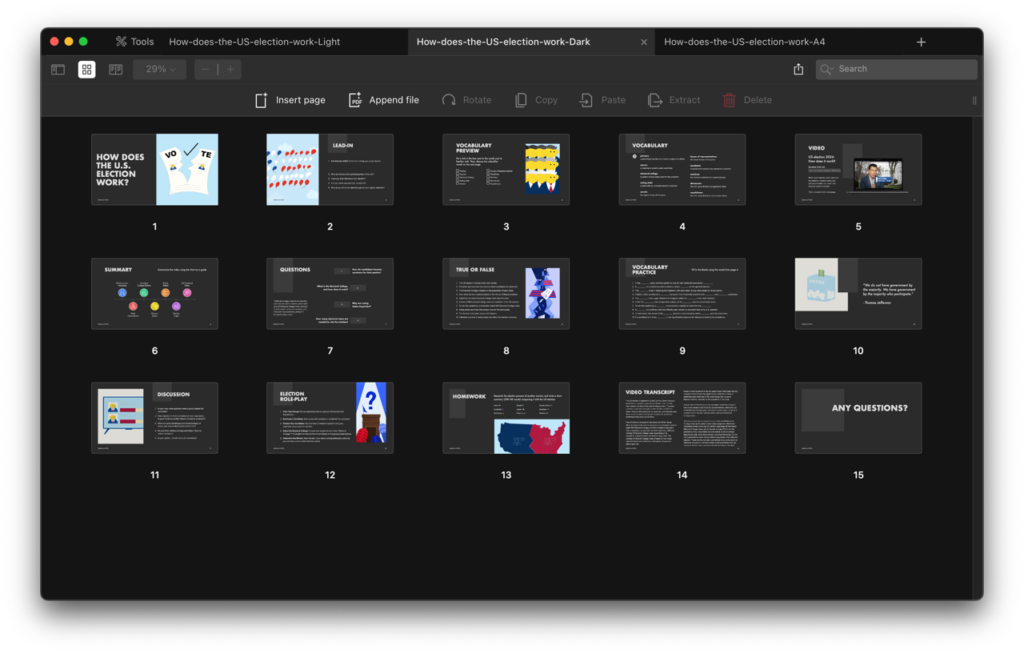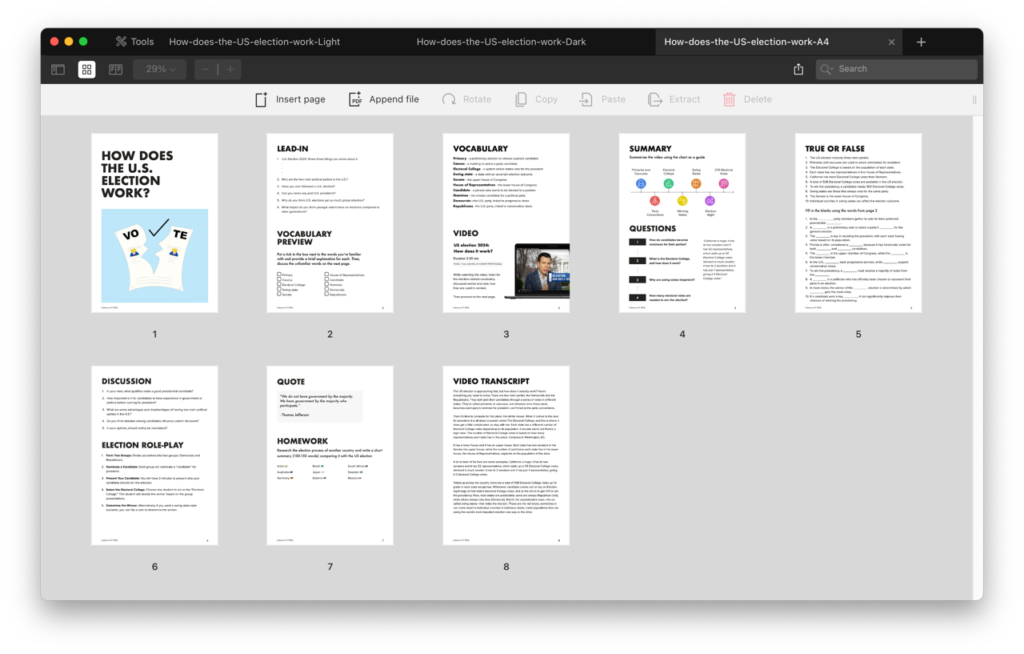How Does the US Election Work?
Dive into the intricacies of the U.S. election system in this engaging B2 ESL lesson! Students will unpack essential terms like Electoral College, swing states, and the primary process through a thought-provoking video and interactive vocabulary activities. They’ll tackle exciting exercises, including sentence correction and a true/false quiz, to solidify their understanding of election terminology. For homework, students will research and compare the U.S. election process with another country’s system, encouraging critical thinking and cross-cultural exploration.
| Type | Level | Vocabulary | Video length | Lesson time |
| Regular Lesson | B2 / Upper-Intermediate | 10 words | 2:20 min | 60-80 min |



Vocabulary
- Primary
- Caucus
- Electoral College
- Swing state
- Senate
- House of Representatives
- Candidate
- Nominee
- Democrats
- Republicans
Contents
- Lead-in
- Vocabulary preview
- Vocabulary
- Video
- Summary
- Questions
- True or false
- Vocabulary practice
- Quote
- Discussion
- Election role-play
- Homework
Lead-in
This B2 upper-intermediate ESL lesson kicks off with five thought-provoking questions about the 2024 U.S. election, designed to spark student discussion and engage their existing knowledge before diving deeper into the electoral process.
Vocabulary preview, Vocabulary
The vocabulary preview page introduces 10 key terms related to the upcoming video. Quickly review the words that students already know before moving on to the next page, where they will delve deeper into definitions and provide relevant examples for better comprehension.
Video, Summary, Questions
This lesson includes a concise yet informative video on the 2024 U.S. election, focusing on how it works. Students will watch attentively, listening for the election-related vocabulary discussed earlier and noting how the terms are used in context. After viewing, they will summarize the video using a provided chart as a guide. To reinforce understanding, an additional comprehension activity with four questions follows.
True or false, Vocabulary practice
The vocabulary practice section features a true or false activity with 10 sentences, providing students with an additional opportunity to reinforce their understanding of the video content. If the video was challenging, students will identify the full sentences and explain why they believe a statement is false. Following this, there are 10 fill-in-the-blank sentences to further practice vocabulary. By this point, students should be familiar with the words, so encourage them to rely on their knowledge rather than referring back to the vocabulary page. However, if they struggle, feel free to assist them with hints or guidance as needed.
Quote, Discussion
The next page presents a quote, serving as a smooth transition from vocabulary practice to more relaxed and engaging discussions. Following this, students will tackle five thought-provoking questions, exploring what makes a good presidential candidate, the advantages and disadvantages of the two main political parties in the U.S., the role of debates before elections, and whether voting should be mandatory.
Election role-play
The election role-play page is the most engaging activity in this lesson. Students will form two groups, representing Democrats and Republicans, and each group will nominate a presidential candidate. They must present compelling reasons why their candidate should win the election. One student will then take on the role of the Electoral College to decide the winner. Feel free to spend ample time on this activity to ensure everyone has a chance to participate and express their ideas.
Homework
The homework page involves researching the election processes of various countries. Students will choose one country from the provided list and write a brief summary, consisting of 100 to 150 words or 10 to 15 sentences, comparing it to the U.S. election system. This task encourages critical thinking and cross-cultural understanding of electoral practices.



